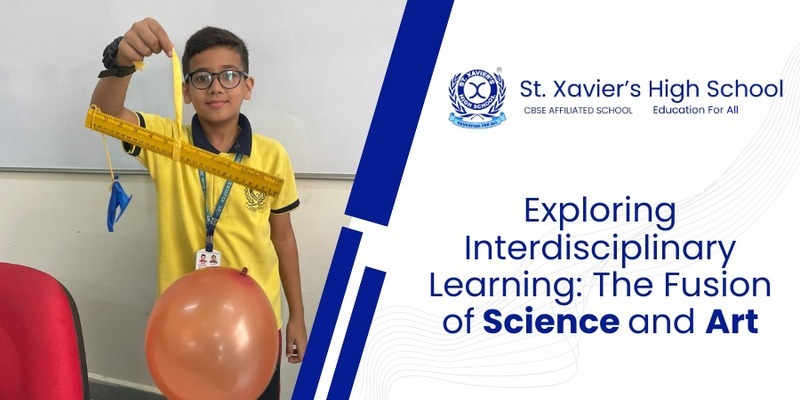Introduction:
In today’s rapidly changing world, the boundaries between academic disciplines are becoming increasingly blurred. As a result, there is a growing recognition of the need for interdisciplinary learning, which encourages students to make connections across different subjects and explore complex real-world problems from multiple perspectives. St. Xavier’s High School in Greater Noida is at the forefront of this educational revolution, pioneering innovative approaches to integrate science and art into their curriculum.
The Integration of Science and Art:
The integration of science and art is not merely an afterthought but a fundamental aspect of the curriculum. Rather than treating these subjects as separate entities, the school recognizes the inherent connections between them and seeks to leverage these synergies to enrich the learning experience. top schools in greater noida west Students are encouraged to explore scientific concepts through artistic expression and vice versa, fostering creativity, critical thinking, and interdisciplinary skills.
Curriculum Design:
The school’s curriculum is carefully crafted to facilitate interdisciplinary learning, with modules that seamlessly integrate science and art. For example, students might study the principles of physics through the lens of photography, learning about light, optics, and composition while experimenting with different camera techniques. Similarly, they might explore ecological concepts through environmental art projects, connecting scientific knowledge with artistic expression.
Teaching Methods:
The teachers play a crucial role in facilitating interdisciplinary learning, employing a variety of teaching methods to engage students and encourage cross-disciplinary exploration. Project-based learning, collaborative activities, and hands-on experiments are commonly used to promote active learning and foster creativity. Additionally, guest speakers and field trips provide students with real-world context and inspire them to think beyond traditional disciplinary boundaries.
Student Experiences:
Students report overwhelmingly positive experiences with interdisciplinary learning, citing increased engagement, creativity, and critical thinking skills. Many express appreciation for the opportunity to apply their knowledge in diverse contexts and explore their interests across different disciplines. Moreover, they value the holistic perspective gained from integrating science and art, recognizing the interconnectedness of all fields of study.
Challenges and Future Directions:
While interdisciplinary learning offers numerous benefits, it also presents challenges, including the need for interdisciplinary-trained educators, logistical constraints, and resistance to change. However, the school remains committed to pushing the boundaries of traditional education and continues to innovate in this area. Looking ahead, the school plans to further integrate science and art into its curriculum, expand interdisciplinary collaborations, and share its best practices with educators worldwide.
Moreover, the success of implementing interdisciplinary learning underscores the importance of fostering a supportive school culture that values innovation and collaboration. Teachers, administrators, and students alike are encouraged to embrace new ideas and explore unconventional approaches to education, creating a vibrant community of lifelong learners.
One of the key factors contributing to the school’s success is the dedication and expertise of its educators. Teachers in school undergo specialized training in interdisciplinary pedagogy, equipping them with the skills and knowledge needed to facilitate meaningful connections between science and art. By fostering a culture of professional development and continuous learning, the school ensures that its faculty remains at the forefront of educational innovation.
Furthermore, the school actively cultivates partnerships with local organizations, universities, and industry professionals to enrich its interdisciplinary program. Collaborative projects, internships, and mentorship opportunities provide students with real-world experiences and expand their understanding of the interconnectedness of different fields. These partnerships also offer valuable resources and expertise to support the school’s ongoing efforts to innovate and evolve.
As it continues to push the boundaries of interdisciplinary learning, it serves as a beacon of inspiration for educators, policymakers, and stakeholders in the field of education. By demonstrating the transformative potential of integrating science and art, the school not only prepares its students for success in an increasingly complex world but also paves the way for a more holistic and integrated approach to education worldwide.
Conclusion:
St. Xavier’s High School in Greater Noida serves as a shining example of the transformative power of interdisciplinary learning. best school in greater noida west By embracing the fusion of science and art, the school has created a dynamic educational environment that nurtures creativity, critical thinking, and holistic understanding among its students. As other schools around the world seek to adopt similar approaches, they can look for inspiration and guidance on the path to interdisciplinary excellence.

